


Fertile eggs will chalk, in other words, they will turn from pink to white in color over time. First, you will see a small white spot, or spots like in the photo below, and then the white area enlarges to form a band around the egg. After a while, the whole egg shell will be white.
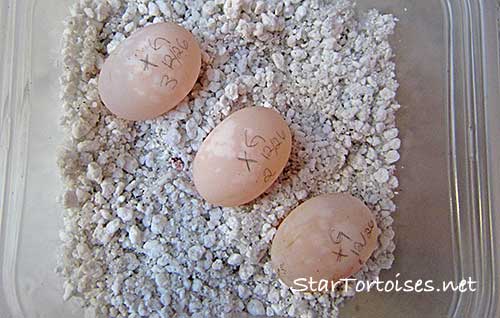
Golden Greek / Mesopotamian tortoise eggs. This was a 3-egg clutch incubated at 86 °F (30 °C). Day 2 of incubation. The eggs are still mostly pink in color, but have little white spots that are often a good sign of fertility. The incubation substrate in the photo is HatchRite, but I usually use vermiculite.
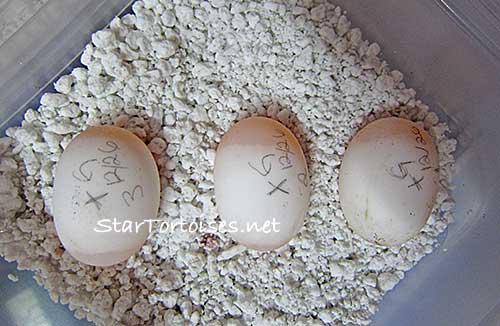
Same eggs at day 7 of incubation. Notice the growing white "bands" around the eggs. Soon these fertile eggs will be all white. Non-fertile eggs do not chalk.
Candling of tortoise eggs is best done in a dark room. Use a very small flashlight or a special egg candling light. Hold the flashlight briefly (to prevent spot heating if the light is hot) near the top or back of the egg. This allows the light to shine through the egg and let's you to see what's inside.
I use a tiny Maglite Solitaire flashlight which is about 3" long and 1/2" in diameter. It's not very bright, but does the job well. Besides, the dimmer incandescent light probably bothers the baby embryo less than a super bright LED light would.
Do not turn or rotate the eggs from their upright position because this can injure or kill the developing tortoise embryo. I just move the egg box; I don't touch the eggs at all. The less you disturb the eggs, the better it is for them. That's why I don't candle eggs very often.
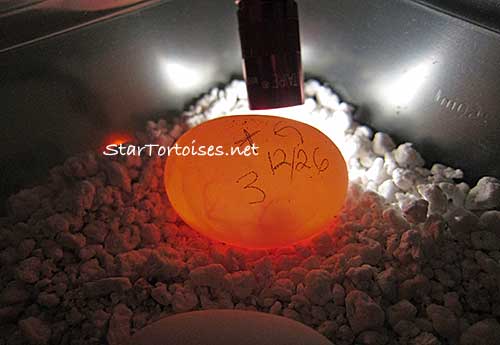
Candling one of the chalked golden Greek eggs shown in the first two photos above at 20 days of incubation. It will take a few weeks of incubation before you can see the blood vessels like here.
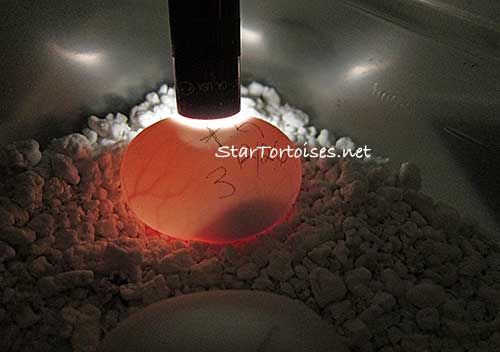
Same egg at 31 days of incubation. Blood vessels and the embryo are visible.
Below are photos of another developing golden Greek / Mesopotamian tortoise egg. This egg hatched first from a two-egg clutch. These eggs were incubated at 90 °F (32.2 °C) with about 75% humidity. Incubation lasted 82 days for the first hatched egg and a week longer for the second hatchling.
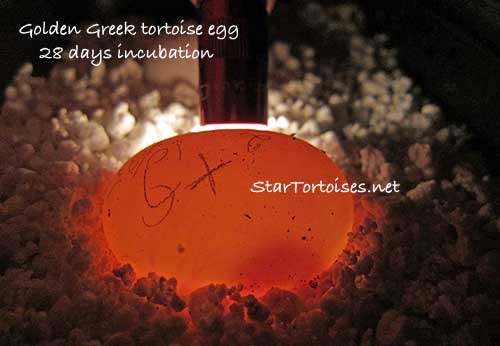
Candling a fertile golden Greek tortoise egg at 28 days of incubation. Notice the red embryo spot.
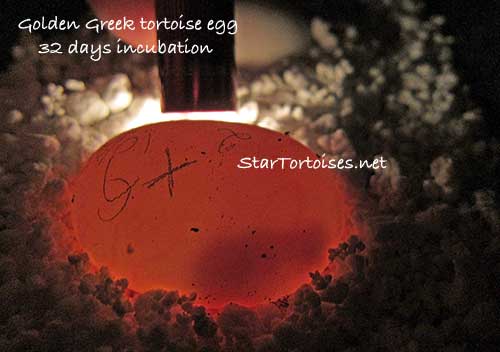
Same egg at 32 days of incubation. The embryo has grown bigger.
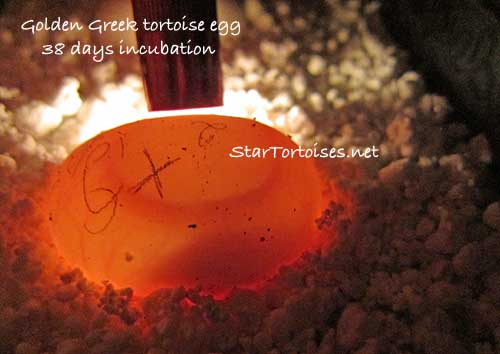
Same egg at 38 days of incubation.
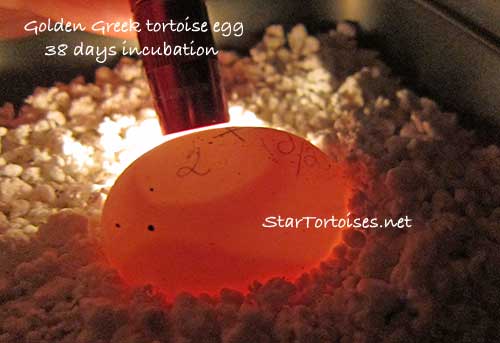
Other side of the same egg at 38 days of incubation.
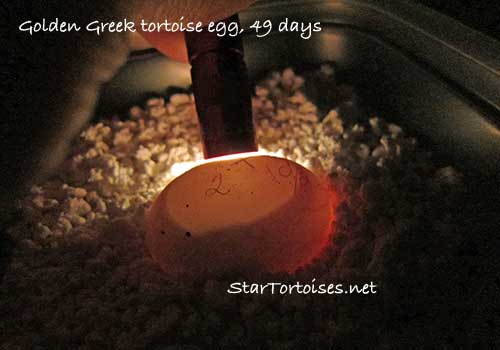
Same egg at 49 days of incubation. It's getting more difficult to see the insides of the egg.
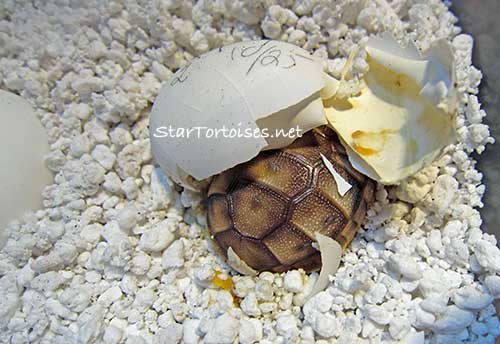
The first baby hatched after 82 days of incubation. She weighed 13 g. Her clutch mate's egg is on the left.
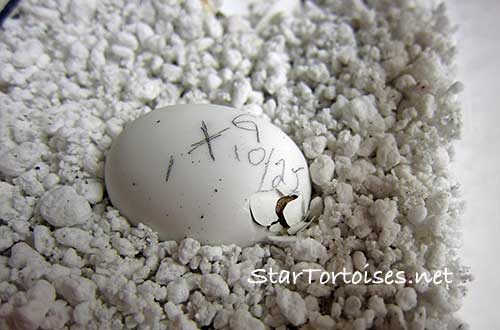
The second hatchling of this 2-egg clutch pipped 7 days after the first one and then hatched 3 days later.